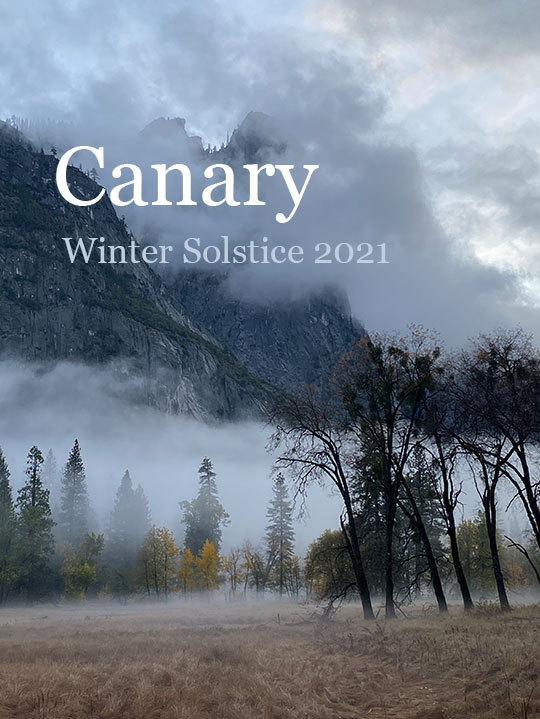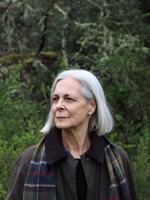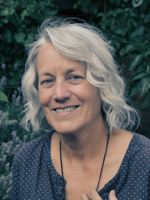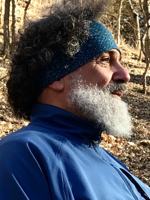Issue Number 55, Winter 2021-22

Contents
- Fulcrum by Warren Woessner
- Midwinter by Warren Woessner
- Prairie Grass – February by Warren Woessner
- Canoes In January by Warren Woessner
- Winter Song by Linda Scheller
- Snowfall by Terri Yannetti
- Every Day Tell the Hours by the Shadows by Tricia Knoll
- Walking on Water by Tricia Knoll
- Snowstorm, December 2020 by Maxine Susman
- Stone Fly by Rachel McKimmy
- Flamingos by Geralyn Pinto
- Reading Miguel Hernández to My Toddler as Thousands of Emperor Penguin Chicks Disappear by Dante Di Stefano
- In the Era of Biological Annihilation by Dante Di Stefano
- The Paris Agreement by Dante Di Stefano
- River of Angels by Brian Yapko
- Tundra Swans Wintering, Mattamuskeet by Becky Gibson
- The Fallen by Kim Schnuelle
- Iambic Muck and Shivers by Jack Phillips
- The Official State Flower of West Virginia by H.E. Fisher
- For Toms River and All the Poisoned Places by Margaret DeRitter
- The Walk by Susan Solinsky
- The Sand Nursery by Barbara Quick
Archives: by Issue | by Author Name

Fulcrum
by Warren Woessner
Warren has spent most of his literary life in the upper Mississippi and Minnesota River Valleys, once Ojibwe and Dakota land, where there is no shortage of winter.

The edge of the sun
is a warm orange disk
pushing through a web
of bare branches.
For a moment, I can look
right at it, and turn
and find the rabbit
in the still-bright moon
setting in the west.
It is the exact day
of the middle of winter.
I am the high priest,
checking the alignment
of the altar and the two stones,
feeling the earth tilt
toward the light.
Right then and there,
I know new life will arise—
water will flow, crops
will grow; I know
I’ll be right again.
Previously published in Clear All the Rest of the Way (Backwaters Press)
© Warren Woessner

Midwinter
by Warren Woessner
Warren has spent most of his literary life in the upper Mississippi and Minnesota River Valleys, once Ojibwe and Dakota land, where there is no shortage of winter.

At 4:45 the sun edges
through a loose nest
of branches, sets
behind a snowbank,
slipping out early
after its brief appearance
in today. But it still dazzles,
like a pearl set in diamonds
on the white breast of a girl
at a charity bazaar. Pretty,
but with a forced smile,
she leans in close,
gets me to take
one more chance
on spring.
Previously published in Clear All the Rest of the Way (Backwaters Press)
© Warren Woessner

Prairie Grass – February
by Warren Woessner
Warren has spent most of his literary life in the upper Mississippi and Minnesota River Valleys, once Ojibwe and Dakota land, where there is no shortage of winter.

Almost touching the snowbanks,
the thin stalks are bent down
like old women walking home
from a country market, empty
early. They are holding
just a handful of seeds—
shopping baskets full of wind.
Previously published in Exit ~ Sky (Holy Cow! Press)
© Warren Woessner

Canoes In January
by Warren Woessner
Warren has spent most of his literary life in the upper Mississippi and Minnesota River Valleys, once Ojibwe and Dakota land, where there is no shortage of winter.

Tipped over, summer and fall
spilled out, winter
moved into aluminum
long houses,
for Dakota ghosts.
Hulls still point
at the lake
like compass needles
point at true loss.
Previously published in Exit ~ Sky (Holy Cow! Press)
© Warren Woessner

Winter Song
by Linda Scheller
Linda lives in the long, semi-arid valley east of the Diablo Range in a flood plain where the Merced River joins the San Joaquin River. Her nights are filled with stars and the calls of coyotes and great horned owls.

December: time
of deepest night
and promise.
The trees sing.
They toss their leaves
and wave to one
another. Limbs
embrace mist,
twigs reach out
to touch the cold.
Earth opens her palms,
catches her breath,
exhales fog.
In the night
a small tree stands
wearing a cloak
of lights. Wind
comes calling
over the fields
and whispers
who did this?
The tree proffers
its gift of stars
in red and gold and green.
© Linda Scheller

Snowfall
by Terri Yannetti
Terri lives in the Housatonic River Watershed near the shore of Long Island Sound.

Snow falling at night
Soundless as a shooting star
Footprints disappear.
© Terri Yannetti

Every Day Tell the Hours by the Shadows
—after Adelaide Crapsey
by Tricia Knoll
Tricia lives in the Vermont woods on unceded lands of the Western Abenaki people.

Evening presses December’s gloom.
Snow-burdens fall on the roof from hickory trees,
drum on the sky lights and smother them in slush.
Little Dog shudders, the one who fears her house
will fall to pieces if she relaxes her vigilance,
the one who later snores in my bed.
The sift of snow weights pine branches into slants.
The shadow of my hand hovers over lined paper:
a lone fist, curved hook with no eye.
My guest left today. This vacant hour piles
on top of the day’s listless work: wash, fold,
sweep, stretch clean sheets, shovel the walk
no one uses. All that’s left is to call the dog
from her bone, turn off two table lamps,
nod good-night to the snow-glow moon,
and walk to where my shadow sleeps.
© Tricia Knoll

Walking on Water
by Tricia Knoll
Tricia lives in the Vermont woods on unceded lands of the Western Abenaki people.

Wait for ice to paralyze
the pond, for the crackling
thinness to thicken
so the under-water moans.
Scuffle through rice-snow
where slush went solid
around someone else’s boot.
Hike around the hockey rink
and the men and children ice fishing
beside coolers of beer and chips.
Let the lake lure you
away from the eyes of cabins,
from smoke signals
fanning from chimneys.
January’s water strider,
as small as the lake makes you
hidden in a hooded coat.
© Tricia Knoll

Snowstorm, December 2020
by Maxine Susman
Maxine lives in Kingston, New Jersey, near Heathcote Brook which feeds the Millstone River watershed, on former farmland that was once a Lenape settlement.

We felt it was bound to happen.
With the first few faint flakes
I walked a long way through the streets
on both sides of the thoroughfare
and met no one.
By the time I got home
snow came slapping me in the face,
it seemed to have a sense of purpose
I have been lacking.
I was in for it now, as other storms
of my decades, but this
ending the hardest year so far
for everyone—storm-breath threats,
bleakness we huddle beneath,
sleet pinging the roof, clicking at windows,
trying to slither in.
Before daylight a plow goes down
our invisible street.
© Maxine Susman

Stone Fly
“Surrounded by stone, this body of mine is seen in the dim light for what it is, fragile and brief. The water closes, seamless, around me… Can we love what will swallow us when we are gone? I do.”
— Linda Hogan, Dwellings
by Rachel McKimmy
Rachel grew up in the northwest, in the mountains within sight of the great Pacific Ocean, and now lives on a mitten-shaped peninsula surrounded by the largest lakes on the planet, in the Lake Erie watershed alongside the Huron River.

On the first day of February, a group of four strangers slide into a vehicle and drive to the outskirts of Ann Arbor, Michigan. The first site they visit is a creek that’s an offshoot of the Huron River. The Huron River is a river that eventually flows into Lake Erie, one of the five Great Lakes of North America, and the most notoriously polluted. This creek is just a little vein in the Erie watershed.
There is a small stream with an old bridge over it, a bridge which is rotting through. On the ground are several inches of snow. Breath puffs out from between cold-chapped lips, chilled air burns lungs. One of the team wades into the icy water up to his waist, wearing brown plastic waders, filling a sample cup beneath the flow of the water and screwing the cap closed. Then, with what looks like a butterfly net, he begins dragging muck up from the depths. Finally, into trays that one of the other team members holds out to him from the bank, he plops the scoops of sticks and mud.
The three others not in the water sit down on buckets or squat in front of the trays, starting to pick through them with metal forceps, looking for something tiny, about the length of a fingernail, with a segmented body, six jointed legs, two antennae, and two tails. This order of insects, officially called Plecoptera, have been around since before the dinosaurs, and are an indicator of water quality because of their sensitivity to pollution. They’re called stoneflies.
The more stonefly nymphs, or larvae, the group finds in a timed period, the healthier the water. The fewer stonefly nymphs the group finds, the sicker. I joined the volunteer group without knowing this involved murder.
By the end of this several-hour excursion to two other sites, our hands are bright red and numb, stiff with cold, with crescents of mud beneath our fingernails. When a nymph is found, it squirms in the grasp of the metal forceps, before being dropped into a small bottle of alcohol. The number of stoneflies from each site is kept as a record of water quality. I can imagine shelves of boxes of dead stoneflies, each box labeled with a different year, going back almost 30 years. Time capsules.
On the Internet, you can find fossils of stoneflies enclosed in amber for sale, calling to mind the mosquito trapped in amber on John Hammond’s cane, in the first Jurassic Park movie. A different type of time capsule.
Despite their short lives, Plecoptera has collectively lived through three mass extinctions in Earth’s history: the Permian extinction 250 million years ago, the Triassic extinction 210 million years ago, and the Cretaceous extinction 65 million years ago. Hiding in debris caught against the flow of the current, the nymphs live. During the last winter of their lives, adults emerge with two pairs of veined wings. Their nymphal stage lasts from one to four years, but in their adult form, they live only a few short weeks.
And yet, Homo sapiens have been upon this planet for less time than this ugly little insect.
The stonefly in amber is frozen in honey-colored stone, polished smooth by a human hand. The membranes in its wings are still clearly defined, and the pattern on its abdomen still clearly visible. Its legs are bent, its wings poised half-open to fly.
“All major changes are like death. You can't see to the other side until you are there.”
— Michael Crichton, Jurassic Park
In ancient Greek mythology, a nymph is a nature spirit, typically imagined as a beautiful young woman lounging in a forested glen beside a river. If you were to seek such a spirit today, where on Earth would you look?
Like the stonefly nymph, I imagine the mythical nymphs of ancient Greece cannot bear pollution. I imagine there are few places today that a nature spirit would like to live. Even the place I grew up in California, an 80-acre forested property, would not be pristine enough.
When I was a child, it was so easy to come across a porcupine, a bobcat, a fox, their eyes reflecting the gleam of a flashlight at night. These days, the woods are overpopulated with woodrat nests, tangles of branches and plant matter built up in trees or right on the forest floor. Their natural predators have been killed off by the rat poison meant for the woodrats, my father says. That forest hasn’t been wild in a long time. My dad has to manage the forest now, thinning the newer alder growth to allow the slower-growing evergreen trees a chance to recover from clear-cutting.
Of all species that have existed on Earth, 99.9% are gone. This current, sixth extinction may cause 90% of species to go extinct, some scientists say. I sometimes imagine that when humans drive ourselves to extinction (and I have no doubt that someday we will go extinct, our greatest fear fulfilled), that the world will be much better off. But that is the future.
This is now, and the forest nymphs are gone, like the foxes.
“There was an old lady who swallowed a fly.
I don't know why she swallowed a fly.
Perhaps she'll die.”
-- Rose Bonne, “There Was an Old Lady Who Swallowed a Fly”
One of my favorite poets, Robert Frost, lived in Ann Arbor. I went to his house once, a white house with Grecian-esque pillars framing the front. It is now transplanted from its original location to the Henry Ford Museum at Greenfield Village in Dearborn, Michigan.
Walking through those empty houses, an uninhabited village, it becomes easier to imagine the world if people were suddenly to disappear. You can walk through but not touch, almost as if you are a ghost lingering after all those who once lived there were gone.
I imagine: the water of the stream runs across the rocks of the streambed. This is the stonefly nymph’s whole world: from the rounded pebbles at the bottom, to the the clots of mud and leaves and sticks caught up against the current that provide refuge from predators, and the bright, rippled surface of the water that is the nymph’s only knowledge of the sky.
The nymph scuttles slowly across the bottom of the stream, its antennae feeling the stones in front of it. Crawling atop a larger stone which it will cling to and camouflage itself, its balance is disrupted by a strong current and it flips upside down, legs waving frantically in an attempt to right itself, as the current plucks it up and bears it away downstream. The nymph is not a good swimmer.
A brook trout, with its dark green scales, orange fins and speckled sides like a piece of abstract art, spots the nymph that is cast adrift, helpless, in the current. Swooping down through the water with a thrust of its streamlined body, the trout opens its mouth wide to gobble the nymph.
A river otter is sunning herself on the bank, water slicking off her oily fur from her afternoon swim. She’s taking a break from building her nest beneath the abandoned vacation cabin farther up the eroding bank. The cabin once belonged to a rich family, but now the wood is rotting and a tree branch has broken through one of the windows. Vines crawl up the sides of the cabin. Like Chernobyl, after the nuclear disaster, the cabin belongs to the forest now.
The otter prances to the water’s edge and slips gracefully into the water, her head held above the surface and long tail trailing behind her. She pops her head below the surface.
Light flashes off of a mosaic of emerald and yellow and blue, catching the otter’s gaze. Coiling her body, she dives after the flash, her webbed paws scooping the water.
The trout sees her movement -- too slow. Grasping the trout in her claws and teeth, she wrestles it into submission before dragging it to the bank where she can eat.
A child skips stones across the slow-moving water, legs dangling off of the dock. One, two, three skips, the stone flies.
The Earth is a flying stone. Upon it, humans wage their wars against each other and against time. The other creatures on the Earth are collateral. Even the stonefly, which has survived three mass extinctions despite its fragility to pollution, may not survive this one.
In the end, Earth’s resources and its life are finite. The Earth is just a stone that flies.
This essay was the winner of the Hopwood Undergraduate Award for Nonfiction in 2021 at The University of Michigan.
© Rachel McKimmy

Flamingos
by Geralyn Pinto
Geralyn lives in Mangalore between the sub-tropical splendor of the Western Ghats of peninsular India and the great expanse of the Arabian Sea to the west.

Flamingos,
a parade of them,
perfectly angled
where foot and ankle meet.
Still and intent
as origami birds
in a child’s craft book.
Ballerinas ruminating,
first on one leg,
then the other.
In the giddy orange
of an Indian noon,
seducing shrimp
into exact and sinuous gullets.
Then, siphoning dye
from crustacean body
to bird barbules
till they burst
into wildest vermilion,
a riotous burning
from shaft to filament tip.
**
Flamingos
upended in riverbed grunge:
urban feed of waxed cups, film
and bright disposable bags.
Uneasy fowl,
tube-legged, sifting
polymer from polymer.
Perfect plastic,
industrial grey
and green flamingos.
Plump and polystyrene,
they will not fly
south in winter, north in spring.
© Geralyn Pinto

Reading Miguel Hernández to My Toddler as Thousands of Emperor Penguin Chicks Disappear
by Dante Di Stefano
Dante lives near the confluence of the Susquehanna River and the Chenango River between the Endless Mountains of Northern Pennsylvania and the Finger Lakes of Central New York.

Little lark of my house,
we totter on the brink
of an incremental extinction;
remember, a small shift
in degrees might sluice us
into the cold blue sea
of nonexistence. This
is no metaphor. We all
tread water with brined
lungs and a horizon
swallowed up by blizzards.
An arctic wind yowls
in your father’s chest
when he thinks of you
jaunting an earth fringed
with inevitable disaster.
O future of my bones
and of my love,
little linnet, you break apart
the iceberg in me.
Keep brimming, you beauty,
even on the edge of apocalypse,
fly us, buoy us, plummet us,
against all despair.
© Dante Di Stefano

In the Era of Biological Annihilation
by Dante Di Stefano
Dante lives near the confluence of the Susquehanna River and the Chenango River between the Endless Mountains of Northern Pennsylvania and the Finger Lakes of Central New York.

Pen the giraffe inside the zoo of your poems.
Bury your poems in the mouth of a tree frog.
Do not listen for the amphibian apocalypse.
Disregard the hummingbird’s shimmer.
From the curved glory of the elephant tusk,
build an ivory cage for your daydreams.
Climb inside the ivory cage and shut the door.
Imagine yourself, a lion and a lioness, roaring.
Step inside your own jaws when you do
and dwell in the sound reverberating there.
The oceans are calling you and the moon
and the sun and all the vertebrae of God
are aligned and singing for you to fall
into place, to recognize the mammalian heat
that binds you to the sleek wet fur of the earth.
You inhabit one note and call that a lifespan.
You would burn away the impossible oxygen
of a single breath. You would ignite
the hydrogen molecules in your own body.
You will leave your great great grandchildren
a world without the music of humpback
and nightingale, without the tiger’s stripes,
without equal possibilities of glacier and gazelle.
The caribou knows more about conservation
than you; listen for the clash of invisible antlers
as you drive furiously down the interstate.
The entire biosphere hums you into being.
The fawn in you will curl up and go to sleep
while in a billion, billion, billion other galaxies
untold numbers of new stars will be born.
© Dante Di Stefano

The Paris Agreement
by Dante Di Stefano
Dante lives near the confluence of the Susquehanna River and the Chenango River between the Endless Mountains of Northern Pennsylvania and the Finger Lakes of Central New York.

It’s Saturday afternoon in the universe and I am wondering what’s on Netflix while the planet is dying and I am reimagining a world of microorganisms sustained and thriving on the mummified lips of the corpse of Kerouac — or is it Frank O’Hara? — no, it’s just some sad former postal employee who voted the Republican ticket every election and went to confession once a week for thirty years and succumbed to pancreatic cancer three years after retirement, but who had become a vegetarian for health reasons in the early twenty first century and practiced yoga and yet could never shed the north side working class from his repertoire of ways of being or almost Vietnam for that matter and who was my father in the last tweaked vision of the Anthropocene.
In America, an author in The Atlantic says, “we have figured out how to launder our money through our higher virtues,” and that is why we read The Atlantic and why we heat our homes with clean coal lit by the crumpled envelopes of junk mail offering to reduce school loans and why the sculpted bodies of Instagram celebrities spin through the undersides of our closed eyelids — even those of us unfamiliar with Instagram — and why we on the bottom still write poetry and die poor and hide behind the landlady’s accordion blinds in apartment living rooms across the nation.
Meanwhile, what about police brutality and homophobia and ableism and confederate monuments and rapists in the White House and serial abusers of women under almost every roof and white supremacists in the White House and con men in the White House and criminals in the White House? …and we should all be rioting in the streets every day and the baby is crying upstairs so I can’t be more specific, but…
Someday soon, I’m going to walk away from the fresh cut lawns of the suburbs, find myself a timbered antiphon, the vesper in a single leaf, hold it out for my wife, for my daughter, for this doomed earth cradling our golden now.
© Dante Di Stefano

River of Angels
by Brian Yapko
Brian, a former resident of Los Angeles, now lives between the Arroyo Hondo Watershed, the Rio Grande and the Sangre de Cristo Mountains, in Santa Fe, New Mexico.

you can’t get there from the old pueblo because
union station’s railyards block the way.
you snake around the tracks where a desiccated
caretaker leads you though chain link, down
a concrete embankment straitjacket to the ancient
river, that imprisoned, used up trickle which will
never know the ghats of the ganges, huck finn’s
raft, the lorelei, or chinese junks. here no old men
fish, no children swim, there are no flamingos,
no cormorants; no lotus blooms to chant of rebirth.
this river sings of discarded couches, rusty metal,
the glare of helicopters and bored film crews. but
when it rains the river remembers herself and her
currents sing of savage things, of zambezi floods,
cascades from yellowstone, niagara, the turbulence
of angel falls; and loud like cars racing on the 101.
imagine los angeles three hundred years ago, when
the land was wild and the river free, self-assured
coursing past the golden hills to the mighty pacific!
i fling off my shoes. i wade barefoot into the paved
riverbed to splash at the columbia-amazon-mekong
and my bare foot is impaled by the glass of a broken
bottle of wine cooler. i bleed angry red into the waters.
as i moan, i see the palm trees and skyscrapers like
guilty children pointing fingers upward instead
of at each other, blaming the sky and telling me
i shouldn’t have come.
© Brian Yapko

Tundra Swans Wintering, Mattamuskeet
by Becky Gibson
A native of Carolina foothills, Becky now lives in sandy flats between the lower Cape Fear River and the Atlantic. She’s intrigued by the region’s waterfowl, especially the tundra swans at Lake Mattamuskeet where they pause every winter on their way north to breed.

Cold for February. Colder still as the sun goes down. Gold-tinged air, gold grasses fringing the canals. Water reflects sky in spectacular bands of color: robin’s egg blue, yolk-yellow, yellow-orange, hot pink cooling to magenta. We hear the swans before we see them—hundreds, maybe thousands, calling at once, and from all corners.
Plangent cries—haunting, insistent, utterly strange. No vowels I recognize. Are they calling kin, calling children? Do they know their child’s cry from every other? One by one, swans let down landing gear, glide to the lake’s surface. Paddle. Sleep afloat. Tip heads under to feed on roots, pondweed, wild celery. Loafing. Hanging out. Resting up for the naked journey north. Not all of them will make it.
Fresh clamor, nearby. Coming up hard to our right, a thrum of wings, more crying. Swans in formation arrow toward water, never breaking ranks. Eyes forward, they skim directly over us. We gaze up in awe at their luminous bellies, heavy and white. I’m astonished by their heft, the effort it must take to heave aloft such a body, much less carry it across continents.
The next morning, I learn that a friend in her eighties died the evening before, right as the Vee passed over. I’d not seen her for weeks. Though schooled by nuns, she’d brook no claptrap about death, not hers or anyone else’s. No afterlife, no heaven. Had she been among the swans sweeping down so close? If so, she did not reveal herself.
These are not angels but birds, big ones, caught in their own immanence, their own radical flesh. Yet, for the moment of their descent, they could be emissaries from another world. Spirit-dove coming to Mary, an incarnation. Do they know we’re here? Or does our being here not matter to them? No division between us on the ground and swans overhead. Their indifference to us the gift.
They fly on. The moment passes. Yet for that moment we’re no longer separate, alien. We too belong to earth, sky, water, every inch of space the swans describe with their path. Betsy left as she meant to, as she was prepared to do. Just as a swan knows where to go, how to get there, wingbeat by wingbeat, its feathers dipped in gold.
© Becky Gibson

The Fallen
by Kim Schnuelle
Kim splits her time between a small urban bungalow above a branch of the Salish Sea and a high desert converted storage container overlooking the Columbia River. She is unabashedly in love with the great Northwest rain forests and their inhabitants.

I come from a land of giants. Washington State is home to the “world’s largest” Douglas fir and Sitka Spruce as well as “America’s biggest” Western Hemlock and Yellow Cedar. One can pick up a map at the Quinault rainforest store and plan a several hour sightseeing tour. Our verdant hills hold an estimated eight and a half billion trees, some young saplings and others ancient elders. But the forest is changing. And what does it mean when the old giants fall?
My family traveled through these wild lands often when I was a child. These trips usually involved my mother driving, straining to remain upbeat and talkative, while my father sat silent, taciturn and barely containing his cloaked rage. The coast highway undulated in curving arcs past sleepy Washington towns. The sun, frequently low on the horizon this far north, shimmered through lightly quaking spruce boughs. I was in the backseat, trying to mentally slip between the giant firs and hemlock that we never stopped to actually touch. Every few miles a new logging truck would pull out from a dusty side road and swerve into our path. My mother would slam the brakes as my father muttered curses over “lost time.” By age five, I was already gifted in focusing elsewhere. So began my routine of counting logs.
The felled trees were so big. Some trucks could only carry three or four segments, so great was their circumference. I lost track of the number of trucks crossing our path. I would daydream about a log so big that a truck could carry no more. A log so big that it filled the flatbed. I didn’t know what that meant at the time. Not yet.
Later, in my teens, I discovered Earth First and fancied myself a minor league activist. I pulled up surveyor stakes at midnight and carried shears to clip fences. I was firmly “camp spotted owl” and had no use for so-called forest management and its razed trees. Upon graduation, I left for university and studied Northwest anthropology. The forests really shifted for me then, from merely a beautiful place to visit into a separate community and culture of its own.
I learned of the braided interweaving of cedar and the wider mammalian community, especially humans. The native peoples of British Columbia called the Western Red Cedar (Thuja plicata – technically a variety of cypress, not a cedar) the “Tree of Life.” Northwest coastal communities relied on cedar for clothes, medicine, totem poles, housing, and weapons. Cedar was a mythopoetic symbol of generosity and providence. Makah legend, from the northwest homeland of Washington State, tells of the two brothers of the sun and the moon, the “two-men-who-changed-things,” who transformed amorphous land beings into seals, herons, ravens, and mink. The brothers, knowing that the human inhabitants they created would need canoes to fish and hunt passing whales, changed one primordial creature to cedar for this purpose. In many ways, it was cedar that made human communities possible in our wet and cold forests.
Over time, Northwest logging practices changed and old growth forests were more often spared from the culling. The remaining giants then became relics, with trails cut so that supplicant tourists could hike a quarter mile and gaze at their majesty. Signs with arrows were installed along Highway 101 to lure visitors to the rainforest elders. Brochures were passed out by rangers.
The resulting pilgrimages took their toll, however. In 2016, its root ball weakened from the hordes of trampling visitors, the world’s largest red cedar, a popular stop on the north shore of Lake Quinault, crashed to the ground. So ended a thousand-year-old life.
The Forest Service quickly removed the directional signs and closed the trail, concerned that injuries would occur if hikers scaled the fallen log. But old maps still show the trailhead location. And so last December my family made our own pilgrimage to the grave of the giant.
Only four years had passed since the crashing down of the old cedar, but she lived in a rainforest. Water can be the great transformer. The trail was already moss-strewn and overgrown. Wooden stairs had rotted through and streams were running down the path. Ferns, salal, and Himalayan blackberries crept over the passage. We made some wrong turns and stumbled, following instinct only, into the woods. And then, there she was.
Others had made the pilgrimage before. We saw their footprints in the muddy ravines between the splintered remains. My son climbed up on her fallen trunk and walked the length of her body. We didn’t talk much. We gazed at the surrounding giant cedars, trying to understand how any tree could be even grander than the titans nearby. Then we gathered our things and trekked back to the car.
We humans often have a complicated relationship with the grand among us. Melville’s novel Moby Dick spotlights the majesty of the giant whale that Captain Ahab is trying to simultaneously control and kill. And first we chain-sawed down, but now adulate to their peril, the giant trees in our midst. Ultimately, however, the true role of these elder trees is inexorably tied to their surrounding physical and mythological community. And myths thrive in the shadowy and unseen places. Perhaps the best way to honor these giants then is to close the trails before they fall. To return them to a place of imagination and myth while they thrive in the deeper woods, unseen by human eyes, but felt deeply still in the human psyche. Perhaps this is how the giants will remain always standing in the human soul.
© Kim Schnuelle

Iambic Muck and Shivers
by Jack Phillips
Jack lives in the Missouri-Kickatuus watershed (in modern times known as the Platte River) where the tallgrass prairie meets the western edge of the eastern deciduous forest and where the Omaha tribal lands meet the Pawnee.

Nature poets gone before us have muddied and mucked their way into used bookstores. Much less than to make a footprint where we don’t belong does it take a poem to make, nothing more than clear exuberance of wild moments running over, each step flowing into the next on land no more enchanted, no less than it ever has been. Or holy. In this moment in muscle and blood-rush shivers, earth-beats in living skin matter most. We go lightly in love with silence but a silence never requiting; the woods here and prairie, river bubble voices of a thousand beings as free as we might be freed. Come what may muddy is later shared boots by the door feet to the fire, cardamom cake still some left fresh pot of coffee on, and poems of our own composing.
© Jack Phillips

The Official State Flower of West Virginia
by H.E. Fisher
H.E. grew up on an island in the cradle of the Atlantic Ocean. Now she lives in upstate New York, growing medicinal plants on her deck in the shadow of the river valley's Palisades.

In the bar, two on tap, my husband regales me
with stories from the Nineteen-seventies—
steel, backwash, tributaries, and barges,
quotes the state motto: Mountains Are Always Free,
and clocks me in to his pap’s midnight shifts
at the chemical plant when Middle Island Creek
suckled the fouled Ohio, the source, he says
from which he drank, bathed, waded in, and fished
as sewage floated by, and how the rhododendron
bloomed along the bank red as Mercurochrome.
© H.E. Fisher

For Toms River and All the Poisoned Places
by Margaret DeRitter
Margaret grew up in New Jersey’s Passaic River Watershed but also spent many summer days near Toms River. She now lives in Michigan’s Kalamazoo River Valley and has paddled many of the state’s rivers and lakes. She also once walked across the Mackinac Bridge, which spans the Mackinac Straits and connects Michigan’s Upper and Lower peninsulas.

This town I passed through all those teenage years ago,
heading to the pristine sands of Island Beach State Park,
the lemonade stands and pizza joints of Seaside Heights.
Never knew pollutants were running through the river,
piping to the ocean, seeping into sandy soil
as metal drums kept rusting underground.
Waste from Ciba-Geigy’s dyes. The price of profits
children’s cancers—brain tumors, leukemia.
No one cared but parents of the stricken kids.
'Til a nurse in Philly noticed all the same hometowns.
And still the years rolled by, the plume kept moving,
city wells kept pumping poison through people’s taps.
Taps. Let us play Taps for the children of Toms River
who never made it to adulthood, who suffered
for the sins of government and Ciba profiteers.
Play it for the kids of Flint, poisoned too by penny-pinching
bureaucrats. For the PFAS drinkers all across the state
of Michigan, sucking down that lethal brew.
Play it for the trout and turtles of the Kalamazoo,
hit first by PCBs from paper mills, then by tar sands oil
from the country’s largest inland spill.
Let us play Taps for all the ruined rivers, all the dying
lakes. But please, God, not for the Mackinac Straits.
Let us shut down that pipeline before it’s too late.
© Margaret DeRitter

The Walk
by Susan Solinsky
Susan lives in the foothills of the Sierra Nevada on land tread by the Northern California Nisenan tribe for thousands of years. Mule deer, coyotes, gray foxes, bears, mountain lions and raptors find homes and prey among the ponderosa pines, madrones, black oaks and cedars.

Sodden rains
came
that winter day,
then a white mist
defying gravity
Iifted
from ebony pavement
and red clay soils,
from deer grass
collapsed by the wet.
Dense as breath,
vapor appeared,
welling up
from downed cedar limbs
and crushed oak leaves:
a damp exhalation
beneath
what could be seen.
All the wetness
on the land
reversed itself
and moved upward,
returning again
to darkening clouds,
to recycle itself,
blanketing the air
with a sweetness
calling any heart
to dance
between earth and sky.
And there,
beyond
the narrow road,
in the two acre
thirsty valley,
grand sugar pines
vanished,
miraculously
reappeared,
transparent,
next to black oaks
shedding
brilliant lamps
of yellow leaves
in the early dusk.
There too,
above
the silent fog
lifting
from mossy bellies,
above
the saw-toothed pines
and purpling clouds
rose
a perfect moon –
blanched
and crisp
as hot sugar
steaming
in the watery sky.
© Susan Solinsky

The Sand Nursery
by Barbara Quick
Barbara spends a lot of time tending the edible gardens she's planted in the sandy loam of a small farm and vineyard on the Santa Rosa Plain, nestled between the Pacific Ocean and the Mayacamas Mountains.

Shells from creatures once alive,
as if the soul were something calcified,
pink and brittle, worn on the outside and shed.
Shepherded here by the waves of this northern sea,
heaped up like sleeping sheep along the shore—
tiny shells as delicate as the ears of the unborn.
Susurrating, the amniotic waters wash away all memories
of those crude crustaceans with their oafish foot
and salty will to survive. All life washed out of them,
shellfish breathe their last and migrate here,
and wait to become sand, and then—
a goblet or a stained-glass window?
All of us who live now once were something else
and something yet again we will become—
washed clean of all we were,
all hardness crushed, the skeletons we so esteemed
worn down to dust.
We started out as starlight and slowly
We transform. This hand that writes,
tinged pink by early morning northern light,
will cease to live at some point
and become whatever follows.
Like the heaped-up seashells here,
evolving into sand.
© Barbara Quick